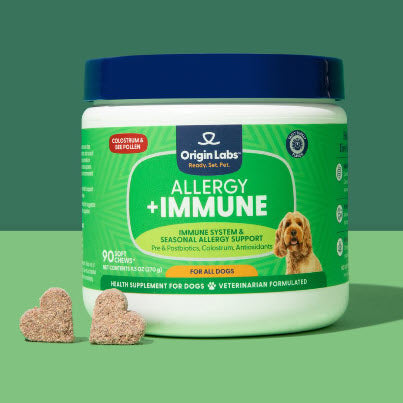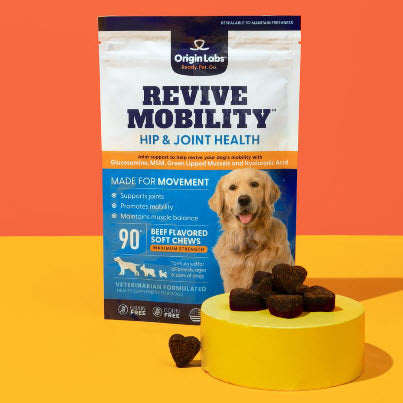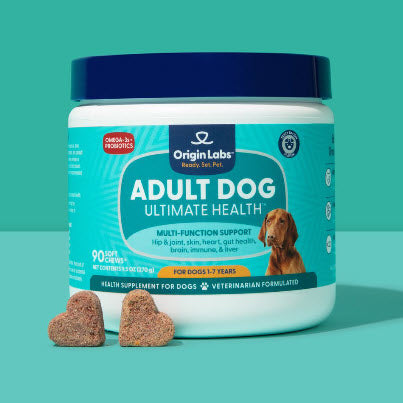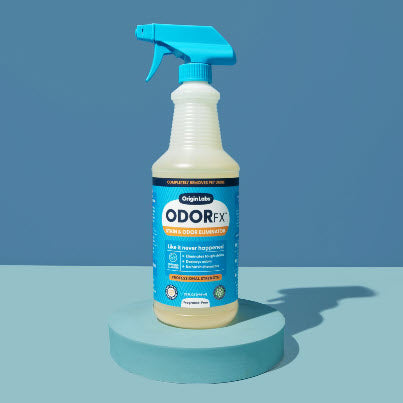Introduction
Can dogs have white chocolate? Understanding the risks and benefits of this popular treat is crucial for responsible pet ownership. Many dog owners may be tempted to share their favorite snacks, including white chocolate, with their furry friends. However, what might be a delightful treat for humans can pose significant health risks to dogs.
White chocolate is a beloved treat among humans, making it highly likely that dogs might be exposed to it accidentally. As pet owners, it is essential to recognize the potential dangers that certain human foods can present to our canine companions.
Responsible pet ownership means making informed decisions about what our pets consume. Being vigilant about their diet ensures they remain healthy and happy. Understanding why certain foods like white chocolate are harmful helps protect them from potential health issues. In fact, there are various Ultimate Health chews available in the market that are tailored to your dog's age, providing them with specific health support as they grow - whether they are puppies or senior dogs (like these ones formulated for senior dogs). Incorporating such supplements into their diet further supports their overall well-being.
Why is White Chocolate Bad for Dogs?
Understanding the risks associated with white chocolate and dogs requires delving into several key factors, from specific toxic components to general nutritional concerns.
Theobromine Toxicity
The primary reason chocolate poses a risk to dogs is due to the presence of theobromine, a naturally occurring stimulant found in cocoa plants. While humans can metabolize theobromine efficiently, dogs process it much more slowly, leading to potential toxicity. The effects of theobromine on a dog’s body can include:
- Increased heart rate
- Restlessness
- Tremors
- Seizures
Even though white chocolate contains significantly lower levels of theobromine compared to dark or milk chocolate, it is not entirely free from this compound. A dog's sensitivity to theobromine varies based on size, breed, and individual health conditions, meaning even small amounts could potentially be harmful.
High Fat and Sugar Content
White chocolate is known for its creamy texture and sweet flavor, which is largely due to its high fat and sugar content. These components pose additional health risks for dogs:
High Fat Content:
- Can lead to obesity if consumed regularly.
- May cause pancreatitis, an inflammation of the pancreas that can be life-threatening.
High Sugar Content:
- Contributes to dental problems such as cavities and gum disease.
- Increases the risk of diabetes in dogs over time.
Absence of Cocoa Solids
Unlike other types of chocolate, white chocolate lacks cocoa solids, which are responsible for most of the rich flavors and aromas associated with chocolate products. While this might seem like a safer option at first glance, it's important to note that:
- Theobromine remains present in minor quantities.
- The absence of cocoa solids does not eliminate other health risks presented by high fat and sugar levels.
Responsible Pet Ownership
Making informed decisions about what our pets consume is crucial. Just as we wouldn't indulge our pets in unhealthy human snacks regularly, it's essential to recognize that white chocolate falls into this category due to its various health risks.
Understanding why white chocolate is bad for dogs sets the stage for recognizing symptoms should an accidental ingestion occur.
Recognizing and Responding to White Chocolate Poisoning in Dogs
Understanding the symptoms of white chocolate poisoning in dogs is crucial for timely intervention. While white chocolate contains less theobromine than dark or milk chocolate, it can still pose a threat, especially due to its high fat and sugar content. Recognizing early signs of poisoning can make a significant difference in your dog's health.
Common Symptoms of White Chocolate Poisoning
When a dog eats white chocolate, the symptoms may vary depending on the amount consumed and the size of the dog. Here are some common signs to look out for:
- Vomiting and Diarrhea: These are often the first signs. The high fat content can upset a dog's stomach.
- Increased Heart Rate: Theobromine affects the cardiovascular system, leading to an elevated heart rate.
- Restlessness and Hyperactivity: Dogs may become unusually restless or hyperactive due to the stimulant effects of theobromine.
- Excessive Thirst and Urination: Increased fluid intake and output can be a sign that something is wrong.
- Tremors and Seizures: In severe cases, neurological symptoms like tremors or seizures can occur.
- Abdominal Pain: Your dog may exhibit signs of discomfort or pain in their abdomen.
Seeking Immediate Veterinary Assistance
If you think your dog has eaten white chocolate, it's essential to act quickly. Here's why prompt veterinary attention is critical:
"Immediate veterinary intervention can prevent severe complications and improve recovery outcomes."
Steps to Take:
- Observe: Monitor your dog's behavior closely for any of the symptoms mentioned above.
- Contact a Vet: Reach out to your veterinarian immediately if you notice any concerning signs.
- Provide Information: Be ready to provide details about how much white chocolate your dog may have eaten and when it occurred.
Why It's Important:
- Theobromine has a prolonged effect on dogs' systems compared to humans, making professional treatment necessary to manage toxicity effectively.
- High fat content in white chocolate can lead to pancreatitis, another condition requiring medical attention.
Recognizing these symptoms and understanding the importance of rapid response ensures that you can protect your furry friend from the potential dangers of white chocolate ingestion.
Preventing Accidental Access to White Chocolate
Educating Pet Owners About the Dangers
Keeping dogs safe from accidental exposure to white chocolate begins with education. Pet owners need to understand the potential risks associated with white chocolate consumption by dogs. While it may not contain the same levels of theobromine as darker chocolates, it still poses health hazards due to its high fat and sugar content.
Tips for Ensuring Dogs Do Not Consume White Chocolate
Implementing practical measures can help prevent dogs from accidentally ingesting white chocolate:
- Store Chocolate Out of Reach: Always keep white chocolate, and any other types of chocolate, in places that are inaccessible to your dog. High shelves, locked cabinets, or dedicated pantry spaces work well.
- Educate Family Members and Guests: Make sure everyone in your household is aware of the dangers of white chocolate for dogs. Inform guests and visitors not to leave chocolate within reach.
- Secure Trash Bins: Dogs are often curious about trash bins which might contain wrappers or remnants of white chocolate. Use bins with secure lids or place them in areas where your dog cannot access them.
- Monitor Children's Snacks: Children might unknowingly share treats with pets. Educate kids on why they should not give any type of chocolate to dogs and supervise snack times to ensure compliance.
Creating a Safe Environment
A proactive approach involves making your home a safe environment for your pet:
- Training Commands: Teach commands like "leave it" or "no" which can be helpful if your dog shows interest in something they shouldn't eat.
- Regular Checks: Conduct regular checks around the house to ensure no stray pieces of chocolate are left within your dog's reach.
- Pet-Safe Zones: Designate certain areas in your home where dogs are not allowed, especially during celebrations or events when treats like white chocolate are more likely to be present.
Recognizing Hazardous Situations
Being able to identify potentially hazardous situations is crucial:
- Holiday Seasons and Special Occasions: During holidays like Christmas, Easter, or birthdays, keep an extra eye out as these occasions often involve more sweets and treats.
- Gift Wraps and Packages: Be cautious with gifts that might contain chocolates. Unwrap gifts away from pets and dispose of packaging safely.
Spreading Awareness
Promoting awareness among fellow pet owners can also contribute significantly:
"Sharing knowledge about the risks associated with white chocolate can prevent many incidents."
Encourage friends, family, and fellow pet owners to familiarize themselves with these dangers. Social media posts, community bulletin boards, or local pet groups can serve as platforms for spreading this vital information.
Understanding these key points ensures a safer environment for pets. By adopting preventive measures and fostering awareness, pet owners can significantly reduce the risk of accidental exposure to harmful substances like white chocolate.
Safer Alternatives to White Chocolate for Dogs
When it comes to choosing safe treats for dogs, it's important to pick options that are specifically made for their dietary requirements. Unlike white chocolate, there are many treats available for dogs that not only taste good but also provide added health benefits. These alternatives ensure that your furry friend stays happy and healthy. Here are some excellent options:
Healthy Treat Options for Dogs
- Designed to promote good oral hygiene.
- Help reduce plaque and tartar buildup.
- Often infused with flavors that dogs love.
Joint Support Treats
- Contain ingredients like glucosamine and chondroitin.
- Aid in maintaining joint health and mobility.
- Especially beneficial for older dogs or those with joint issues.
Low-Calorie Snacks
- Ideal for weight management.
- Made with natural ingredients such as fruits and vegetables.
- Free from artificial additives and preservatives.
Hypoallergenic Treats
- Formulated for dogs with food sensitivities or allergies.
- Made with limited ingredients to avoid common allergens.
- Ensure a tasty yet safe option for sensitive stomachs.
Training Treats
- Small, bite-sized pieces perfect for reward-based training.
- High in flavor but low in calories.
- Encourage positive behavior without contributing to weight gain.
Natural and Homemade Options
For those who prefer homemade treats, several safe ingredients can be used to create delicious snacks:
- Pumpkin: Rich in fiber and vitamins; great for digestive health.
- Peanut Butter: A favorite among dogs (ensure it contains no xylitol).
- Sweet Potatoes: High in vitamins A and C; can be baked into chewy treats.
Commercially Available Safe Treats
Several brands offer commercially available treats that prioritize your dog's health:
- Freeze-Dried Liver Treats: High in protein and free from artificial ingredients.
- Fruit-Based Chews: Made from dried apples or bananas, providing natural sweetness without added sugars.
- Vegetable Sticks: Carrot sticks or green bean chips as crunchy, nutritious alternatives.
Making the Right Choice
Choosing the right treat involves understanding your dog's specific needs and preferences. Always opt for products made with high-quality ingredients and avoid treats high in sugar or unhealthy fats.
To ensure your dog receives the necessary nutrients while enjoying their treats, consider incorporating health supplements from Origin Labs into their diet. These supplements offer targeted support without compromising on taste or enjoyment.
By selecting healthier alternatives to white chocolate, you can provide your dog with snacks that are not only safe but also beneficial to their overall health.
Conclusion
It is important to be careful about what our dogs eat. White chocolate may not seem dangerous because it has less theobromine than other types of chocolate, but it can still be very harmful to dogs. Pet owners need to make sure that their dogs don't get any white chocolate.
Taking care of a dog's health involves:
- Giving them the right food
- Making sure they get enough exercise
- Taking them to the vet regularly
While health supplements, like those from Origin Labs, can help with overall health, they should not be used instead of a balanced diet or medical treatment from a vet. Being a responsible pet owner means making good choices to keep our furry friends safe and well.
By knowing about the dangers of white chocolate and doing things to stop dogs from eating it by accident, we can do a better job of keeping our dogs safe and healthy.
FAQs (Frequently Asked Questions)
Can dogs have white chocolate?
No, white chocolate is bad for dogs due to its theobromine content, which can be toxic to them. It also has a high fat and sugar content that can be harmful to their health.
Why is white chocolate bad for dogs?
White chocolate is bad for dogs primarily because of its theobromine content, which can lead to theobromine poisoning in dogs. Additionally, its high fat and sugar content can also pose health risks to dogs.
How can I recognize and respond to white chocolate poisoning in dogs?
Symptoms of white chocolate poisoning in dogs include vomiting, diarrhea, increased thirst, restlessness, and elevated heart rate. If you suspect your dog has ingested white chocolate, it's important to seek immediate veterinary assistance.
How can I prevent accidental access to white chocolate for my dog?
To prevent accidental access to white chocolate, pet owners should be educated about the dangers of allowing their dogs to consume it. It's important to keep white chocolate out of reach and not offer it as a treat to dogs.








